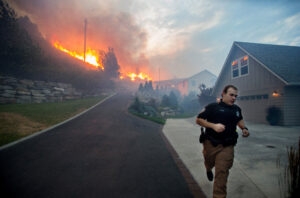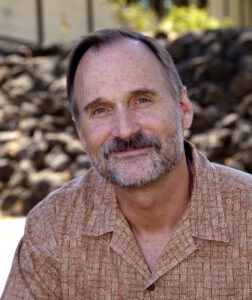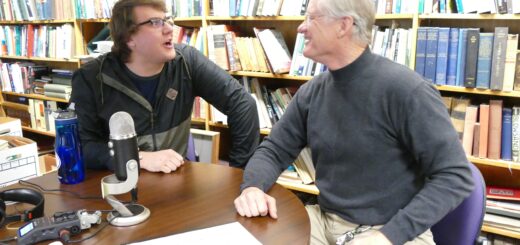The powerful lessons of the Era of Megafires project
There are powerful insights we can learn from the Era of Megafires project that could help us craft more effective ways of solving difficult challenges in our communities.
In just over a year of making presentations all over the region, the Era of Megafires project has helped foster dialogue in dozens of communities and at the same inspired lawmakers in Olympia to take action to help address forest health issues. What has been accomplished is rather astonishing. The forest health and wildfire issue will take many years to address, but starting to take action is far more satisfying than throwing our hands up and hoping the issue will go away.
This week, Hessburg, project coordinator Sara Rolfs, and a team from North 40 headed by Jeff Ostenson, went to Washington, D.C., to present at the World Resources Institute, a global resource organization working on sustainable strategies. The audience was dominated by non-government organizations devoted to thoughtful use of resources both here and around the globe.
Hessburg has already presented to U.S. Forest Service Chief Tony Tooke, his leadership team and the regional foresters. So the little project that got started here in North Central Washington is gaining impressive traction.
I spoke with Hessburg and Rolfs prior to their trip for my Art of Community podcast about the lessons they’ve learned about inspiring change with a problem that seems insurmountable.
In the just the past year, they’ve given nearly a hundred presentations to 26,000 people across seven Western states. And Hessburg’s TEDx talk in Bend, Oregon, will next week appear on the main TED web page, which is further evidence of the momentum and interest in this effort.
Here are a few of the key secrets of success that they shared with me:
The presentation is understandable by anyone. It is not a lecture but a conversation starter that marries powerful graphics that tell how we ended up with this problem.
Rather than promoting a single solution, the presentation offers some tools and how those tools can be used. The onus is on the particular community to come up with their own formula for addressing their issues. This is an empowering approach.
There’s something compelling about grass-roots efforts like the Era of Megafires. Building networks and encouraging broad involvement are powerful tools for change.
Hessburg said he tells the audiences that no one is going to fix their wildfire issues for them. It’s up to local cities, neighborhoods, fire managers, counties and civic leaders to find their own solution with the available tools.
The Era of Megafires Project presentations are creating a grass-roots network of individuals and communities committed to mitigating the risk and damage of wildfires.
This kind of community building is becoming the new DNA of how the Wenatchee Valley works together. Collaboration and shared interest will outperform isolation and competition every time.
If you want to gain greater insights, please check out my podcast on iTunes or access the artofcommunityncw.com web site.

This Don Seabrook photo shows the terrifying and destructive Sleepy Hollow fire as it ripped through the Broadview development.




